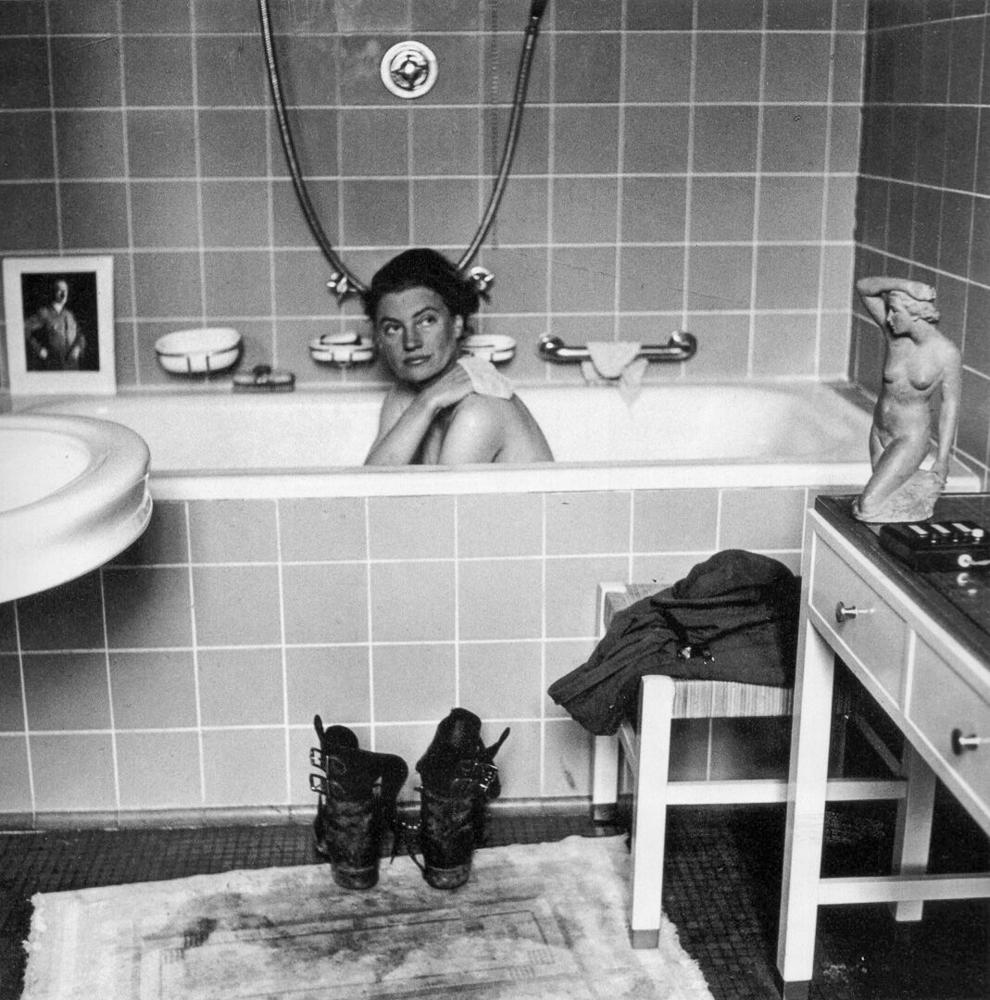Resident, former Corcoran curator to talk on Miller’s legacy Friday night
Rappahannock resident Jane Livingston, a former curator and associate director of the Corcoran Gallery of Art in Washington, D.C. will explore the artistic legacy of American photographer Lee Miller in a program Friday, Oct. 3 at 7 p.m. at the Little Washington Theatre.
The program is sponsored by the Rappahannock Association for Arts and Community (RAAC).
A year ago, moviegoers took in one chapter of Miller’s unusual life, as depicted in the acclaimed film, “Lee,” which dramatized her fearless exploits in the embattled cities of Europe during World War II. Miller’s stream of images, initially published in Vogue magazine, told a story of just how ghastly the all-consuming war was for ordinary people.
The film, starring Kate Winslet, was gripping, but many viewers wondered what Miller did before and after the war. And many were haunted by the scenes from the end of Miller’s life, when the model-turned-photographer was ill, sad, and at great distance from her own artistry and her appetite for adventure.
Livingston has many insights into both the art and the character of Lee Miller. In 1989 and 1990, she assembled a defining exhibit of her work at the Corcoran, which then toured seven U.S. cities. She also authored the accompanying book, “Lee Miller: Photographer,” with arresting photographs plus biographical and interpretative essays.
When the movie came out, Livingston was quick to point out that Miller’s artistic significance as a photographer goes beyond the wartime images that the recent film emphasized. In the 1920s, Miller worked with American visual artist Man Ray in Paris to stake out a place for photography in the unfolding surrealist movement. She was Man Ray’s lover and lifelong friend, and mixed with some of the artists who most influenced 20th century painting, sculpture and photography.
Livingston’s career in the arts has entailed deep and authoritative analyses of artists and their work. Her definitive studies and commentaries on the American painter Richard Diebenkorn explore his alternating focus on figurative and abstract works, his psychological understandings and his way of discovering a painting as he worked on it, with accidents and improvisations cropping up along the way.
“Choosing artists to spend huge amounts of time with is as organic as all life’s big decisions,” Livingston said in an interview. She added that throughout her career, she chose artists to exhibit and write about because of “my aesthetic convictions, as opposed to others’ agendas or guaranteed popularity. That’s why it’s been such fun and why I’m still doing it.”
Livingston discovered Miller in the 1980s when she organized and co-authored the book “L’Amour Fou: Photography and Surrealism.” Around this time, a friend from Los Angeles helped Livingston contact Miller’s son, British photographer Antony Penrose. In the 2024 film, Penrose is shown coaxing recollections and reflections from his mother late in her life.
Livingston is capable of both astute psychological insight as well as authoritative art criticism. Miller presents an acclaimed body of exceptional photographic work alongside a life story that was often fragmented, compulsive, and messy.
In her book on the photographer, Livingston makes an unusual statement that underscores her determination to explore the character and psychology of artists, not just the impact of their work. Miller, Livingston wrote, “combined a drive for recognition — whether through her looks, her wit, or her talent — with a periodic, fierce determination to somehow get outside herself, to forget, or better, to lose herself in a vision operating through her, rather than one reflecting back from her.”
This makes Lee Miller — her life and work — complex, hard to pin down, and endlessly interesting. “I’ll talk more about that on Friday,” Livingston said.
The Little Washington Theatre is located at 291 Gay St., Washington. Admission is free. Donations are welcome to cover expenses associated with the maintenance and management of the theater. Hearing assistance is available.




